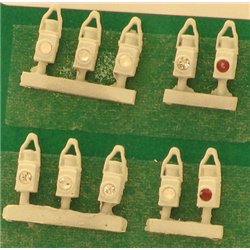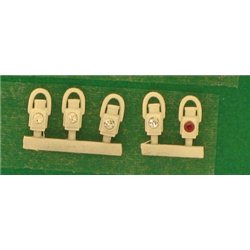Static grass puffer bottles work by manually charging model grass fibres with static electricity. When the charged...
No products
Product successfully added to your shopping cart
There are 0 items in your cart. There is 1 item in your cart.
Search Tips
How do I paint glowing lanterns?
To paint glowing lanterns on miniatures, you'll need to simulate a light effect that gives the impression of a soft, glowing glow. Here's how you can do it:
Base Coat the Lantern: Start by painting the lantern itself. For the metal parts, use a dark metallic colour (like Gunmetal) for the frame and accents. The lantern's glass can be painted a dark colour, such as black or dark brown, to represent the lack of light.
Add the Glow Effect: The key to making the lantern glow is using bright, light colours. You'll typically want to use yellow, orange or even a pale green to simulate the light from the lantern. Here's how you can layer it:
- Use a bright yellow or orange to paint the area where the light source would be (the inside of the lantern).
- Blend it out towards the edges of the lantern's glass and make the glow softer as it moves away from the light source. This is often done by mixing in a bit of white or a very pale yellow into your paint.
Glazing the Light: To create the illusion of light spilling out of the lantern, you'll want to use a glazing technique. Thin down a bright yellow or orange glaze (by mixing the paint with water or a medium like a yellow glaze) and gently apply it over the surrounding areas where the light would affect the surroundings. This could be the base of the lantern or the areas around it. Apply thin layers, building the glow up gradually.
Highlighting the Lantern: Use a very light colour to highlight the edges of the lantern itself. For the metal parts, use a metallic highlight like light silver. For the glass, you can use a faint touch of white or a very pale yellow along the edges to make it look like the light is interacting with the lantern's surface.
Final Touches (Optional): For even more impact, you could use a very fine drybrush of white or light yellow on the topmost surfaces, such as the top of the lantern or any raised parts, to give the appearance that they are reflecting the light. You can also use a very fine brush to add some tiny "light" streaks spilling out of the lantern onto the surrounding base.
This effect works best with darker backgrounds or surfaces around the lantern, as the light contrast will make it pop. You can experiment with layering and blending to refine the effect, and remember that a glowing effect is all about subtlety and gradual transitions in light.
Click here to receive the tips weekly in your mailbox. You can unsubscribe at any time.










